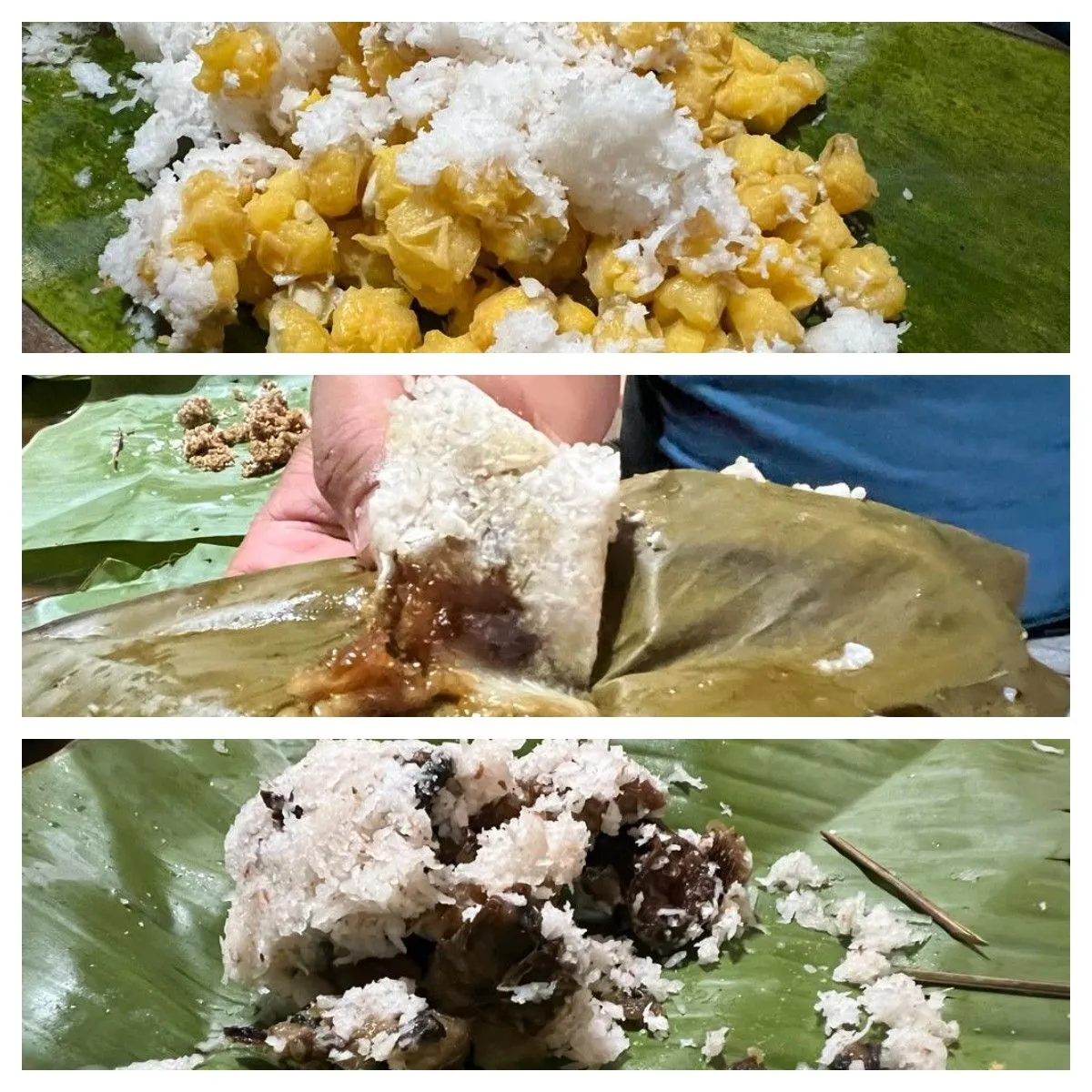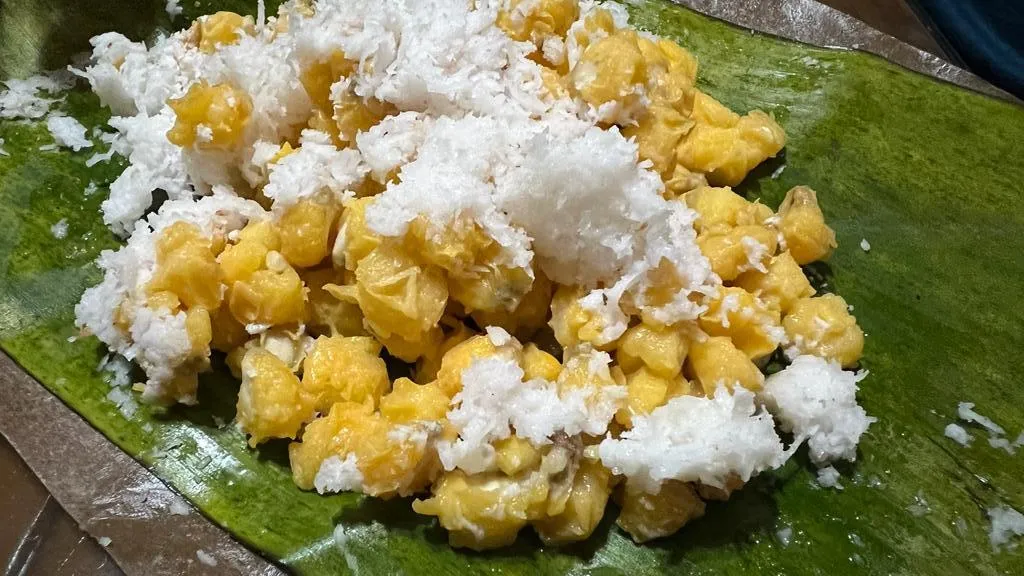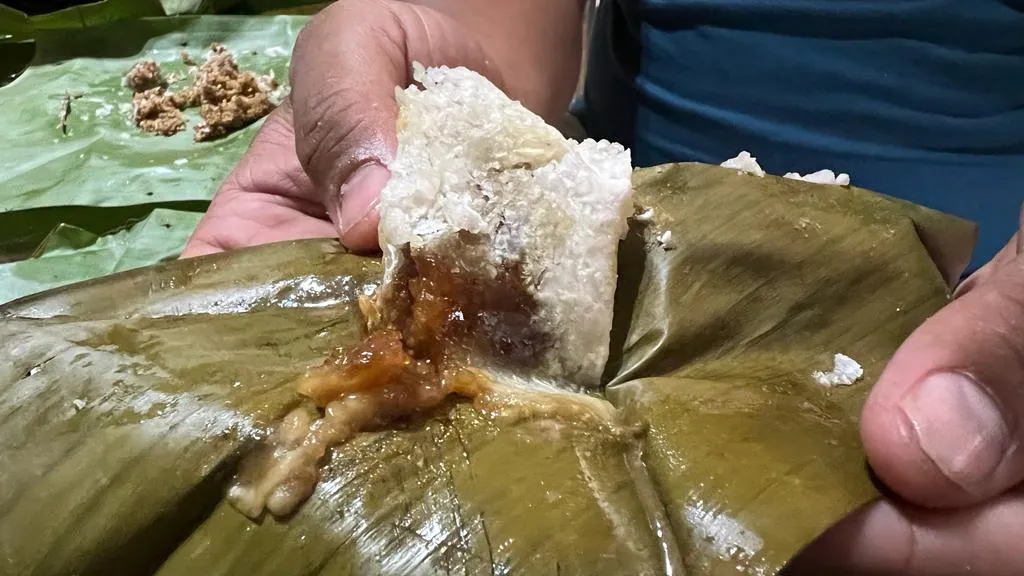
Hello everyone
How are you today ? I hope and pray, we are all always given health and also happiness in living this life. This time, I want to come back to participate and contribute to this community. I want to share information and inspiration for all members of the Plant Power (Vegan) Community, and keep watching my posts this time.
Traditional Snacks and Coconut
Do you know coconuts? I think everyone who lives and lives on this earth must know this plant that has many benefits. Since ancient times, humans have used coconuts for many things. We can use almost all parts of the coconut tree. We can drink young coconuts and they taste very fresh, old coconuts can be used as coconut milk which is useful for cooking. Coconut tree trunks can also be used to make wood, coconut leaves become partitions for brooms. Really, plants that have many benefits for human life.
I live and live in Medan City, Indonesia. My country is in the form of islands so we will find lots of coconut trees growing here. Since long time ago, our ancestors used the potential of coconut very well and optimally. One of them, in Indonesia you will find lots of traditional culinary or snacks that use coconut as the main ingredient.
Some time ago, when I went to a traditional market. I bought some traditional plant based snacks which are very authentic and interesting for me to discuss. These three traditional snacks, all use coconut and are very interesting for us to discuss and review.
Brondol Jagung

Brondol Jagung is a traditional plant-based snack originally from Indonesia. This traditional snack originates from Java Island and spreads to all places in Indonesia due to the spread of the Javanese ethnic diaspora. When I was a child, I often bought these traditional snacks which were sold by traveling bicycle swords.
Brondol Jagung is a very simple food. This traditional snack is made with corn, grated coconut, and sugar. The manufacturing process is very simple, the corn will be shelled one by one and then steamed. After the corn is cooked, it will be sprinkled with grated coconut and sugar. How does it feel ? of course it is very delicious, I have never once seen a person who sells these snacks fail to provide delicious corn popcorn. One thing is important, this traditional snack is easy to spoil and is not suitable to be stored for more than four hours.
Ombus Ombus / Lappet Bulung

The second traditional snack is Ombus-ombus or lappet bulung. This traditional snack comes from North Sumatra, the province where I live. Ombus-ombus is a plant based snack made from rice flour, coconut, palm sugar and salt. The process of making ombus-ombus also uses the method of steaming so that it is healthier than fried snacks like today's modern snacks.
Ombus-ombus has a sweet and savory taste. This traditional snack is very delicious when eaten while it is still hot. When you try it for one time, you will definitely be addicted. I've also written the recipe in this community some time ago.
Tiwul

The third traditional snack that I bought at this traditional market is tiwul. What is tiwul? This traditional plant-based snack is made using finely ground coconut and then steamed. Tiwul has a texture similar to rice. Tiwul will later be eaten with grated coconut and brown sugar. In the past, when there was a food crisis in the era of Dutch colonialism. Javanese people use tiwul as their main food, replacing rice. For tiwul, I don't really like this food but I can still taste it. It's too filling to be consumed as a snack.
Of the three traditional snacks that I discussed, apart from using coconut, we can find one other similarity, namely the method of cooking using steaming. From my culinary experience exploring and tasting authentic and traditional culinary in Indonesia. All of them use steaming or boiling methods which make food better and healthier.
If I think about it, in this era all popular snacks in Indonesia use the deep fry cooking technique with hot oil. In fact, 100 years ago when there was no cheap cooking oil, everyone could enjoy healthier snacks that still tasted delicious.

Call me Isdarmady, because I have a full name that is very long, namely Isdarmady Syahputra Ritonga. I am a head of the family who work as Farmers Vegetables Hydroponic and Consultant Hydroponics, sometimes I also sell coffee from various regions in Indonesia.
I have expertise dispensing coffee with a variety of techniques and tools brewing, because I have the desire to make a coffee shop with hydroponics as centerpieces. Help me realize that dream.
Thanks for read, vote, re-blog and support me in Hive. Maybe god will reward the kindness, let’s success together.
